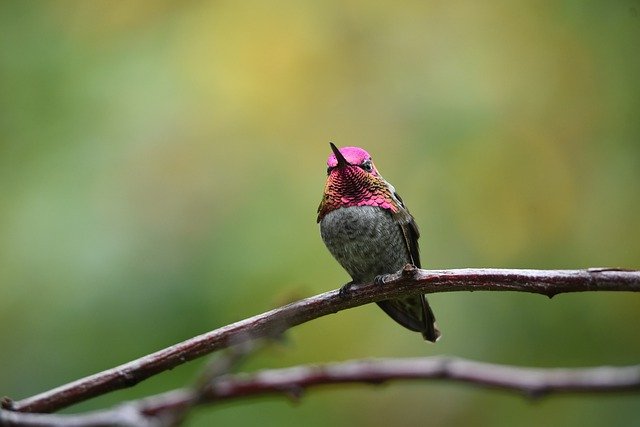Ruby Throated Hummingbirds
Quick facts:
- Ruby-throated hummingbird
- Profile of ruby-throated hummingbird
- Size 7-9cm (8-11cm wingspan)
- Speed up to 48 km / h
- Weight 2-6 g
- Lifespan 3-5 years
- Food nectar, tree sap, insects, spiders
- Enemies hawks, jays, cats
- Habitat of the breeding area: North America; Winter quarters: Central America
- Ok seabirds
- Family hummingbird
- Scientific name Archilochus colubris
- It has a long and thin beak, it can fly backwards
Features and peculiarities
Hummingbirds are birds that can fly backwards. They are also known to drink nectar with the beak of flowers. More than 330 species of hummingbirds alive now.
They live exclusively in America, mostly around the equator, mainly in South America.
Only the ruby-throated hummingbird is the only one living in eastern Canada and the United States and thus further north than any other.
The ruby-throated hummingbird is also characterized by other things: it is the bird with the fewest feathers and the fastest wing flap.
Bird with the fastest wing flap
The ruby-throated hummingbird fastest birds. But not for its speed in flight. The ruby-throated hummingbird flaps its wings up to 200 times per second.
Now please do the math: 200 times per second is 12,000 times per minute.
You could of course convert that to hours, but hummingbirds rarely fly that long or just as they move south (see below).
Bird with fewer feathers
The ruby-throated hummingbird still holds a record – it has the fewest feathers of any bird in the world.
While the whistling swan has its maximum with around 25,000, the ruby-throated hummingbird has only around 940 feathers.
Ruby-throated hummingbird
The sun makes the plumage shine
When the sun shines on the plumage of a ruby-throated hummingbird, it magically glows. In the shade, the animals look rather dull and gray. You can learn more about this in our general hummingbird profile.
Ruby-throated hummingbirds have stamina
When winter comes to their fertile ground in North America, it gets very cold. Too cold for the birds. You put on your socks (or feathers?)
And fly south to Central America, where it’s pleasantly warm. In doing so, they show what kind of endurance they have:
they cover a distance of 2,000 km and manage a non-stop flight of 800 km over the Gulf of Mexico (a huge bay).
They need 18-22 hours and an incredible amount of energy to fly. That’s why they eat a fat belly in advance, so they weigh twice as much before starting.
Ruby-throated hummingbird
Males and females are different
If you look at the photos on this page, you might think there are two completely different birds shown here. But they’re all ruby-throated hummingbirds.
Males have a striking bright red color on the throat and a greenish back.
Females have white throats and are generally less conspicuous and less colorful. For good reason, because this way they cannot be easily tracked by enemies.
Rub-throated hummingbirds have many enemies
Not only birds of prey, snakes, cats and reptiles are a danger to the ruby-throated hummingbird. Since it is so incredibly small, it must also be afraid of large praying mantises, spiders and dragonflies.
